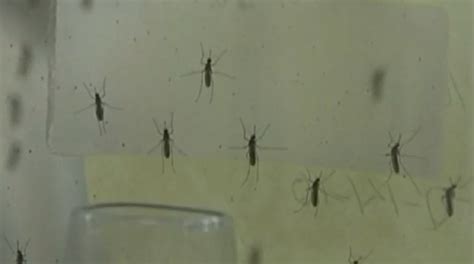
Consuming sugary drinks after a high-sodium meal could negate any potential health benefits from the meal and significantly increase the risk of dehydration, cardiologists warn. The common practice of reaching for soda, sweetened juices, or other sugary beverages to quench thirst after salty foods can exacerbate the negative cardiovascular effects of sodium, potentially leading to high blood pressure and other heart-related issues.
Cardiologists are increasingly concerned about the widespread habit of pairing high-sodium foods with sugary drinks, a combination that can overwhelm the body’s regulatory mechanisms and trigger a cascade of adverse health consequences. “When you eat something high in sodium, your body pulls water out of your cells to try to dilute the sodium concentration in your blood,” explains Dr. Cheng-Han Chen, a board-certified cardiologist and medical director of the Structural Heart Program at MemorialCare Heart and Vascular Institute at Saddleback Medical Center in Laguna Hills, California. “If you then drink a sugary beverage, you’re adding more to the problem. The sugar will also pull water into your bloodstream, further contributing to dehydration at the cellular level.”
The problem arises because the kidneys play a vital role in regulating sodium and fluid balance. After a high-sodium meal, the kidneys work to excrete excess sodium through urine. However, sugary drinks can impair this process. Fructose, a common sugar found in many sweetened beverages, can interfere with kidney function and reduce the kidneys’ ability to effectively remove sodium. This interference can lead to sodium retention, increasing blood volume and blood pressure.
Moreover, sugary drinks contribute to weight gain and insulin resistance, both of which are independent risk factors for heart disease. High blood sugar levels can damage blood vessels, making them more vulnerable to plaque buildup and atherosclerosis. The combination of high sodium and high sugar creates a perfect storm for cardiovascular problems.
Cardiologists recommend opting for water or unsweetened beverages like herbal tea or sparkling water after consuming high-sodium foods. These beverages help the kidneys flush out excess sodium without adding extra sugars or calories. Staying hydrated is crucial for maintaining overall health, especially after meals high in sodium.
“The best way to rehydrate after a high-sodium meal is to drink plenty of water,” suggests Dr. Chen. “Water helps to flush out the excess sodium without adding any additional stressors to your body.”
The Dangers of High-Sodium Diets
High-sodium diets have long been associated with an increased risk of hypertension, heart disease, and stroke. Sodium plays a critical role in maintaining fluid balance and nerve function, but excessive intake can disrupt these processes. The Dietary Guidelines for Americans recommend limiting sodium intake to less than 2,300 milligrams per day for adults, yet the average American consumes significantly more than this amount.
Processed foods, fast foods, and restaurant meals are often loaded with sodium. Even seemingly healthy foods like canned soups, deli meats, and bread can contribute significantly to daily sodium intake. Reading food labels carefully and making informed choices are essential for managing sodium consumption.
The Role of Sugar in Cardiovascular Health
Excessive sugar consumption is also a major contributor to cardiovascular disease. Sugary drinks, in particular, have been linked to an increased risk of obesity, type 2 diabetes, and heart disease. Fructose, a type of sugar commonly found in sweetened beverages, is metabolized differently than glucose. It is primarily processed in the liver, and excessive fructose intake can lead to fatty liver disease, insulin resistance, and elevated triglyceride levels.
The American Heart Association recommends limiting added sugar intake to no more than 6 teaspoons (25 grams) per day for women and 9 teaspoons (36 grams) per day for men. However, many people consume far more sugar than this amount, often without realizing it.
The Synergistic Effects of Sodium and Sugar
The combination of high sodium and high sugar intake can have a synergistic effect on cardiovascular health, exacerbating the negative effects of each individual component. High sodium increases blood volume and blood pressure, while high sugar contributes to insulin resistance, weight gain, and inflammation. Together, these factors create a perfect storm for heart disease.
Research has shown that individuals who consume both high-sodium and high-sugar diets have a significantly higher risk of developing hypertension, heart disease, and stroke compared to those who consume either high-sodium or high-sugar diets alone. This underscores the importance of limiting both sodium and sugar intake for optimal cardiovascular health.
Practical Strategies for Reducing Sodium and Sugar Intake
Making small changes to dietary habits can have a significant impact on sodium and sugar intake. Here are some practical strategies for reducing sodium and sugar in your diet:
- Read food labels carefully: Pay attention to the sodium and sugar content of packaged foods and choose lower-sodium and lower-sugar options whenever possible.
- Cook at home more often: Cooking at home allows you to control the amount of sodium and sugar in your meals. Use fresh ingredients and avoid adding excess salt or sugar.
- Limit processed foods: Processed foods are often high in sodium and sugar. Reduce your consumption of processed foods and opt for fresh, whole foods instead.
- Choose unsweetened beverages: Avoid sugary drinks like soda, sweetened juices, and sports drinks. Opt for water, unsweetened tea, or sparkling water instead.
- Use herbs and spices: Enhance the flavor of your food with herbs and spices instead of salt.
- Be mindful of portion sizes: Eating smaller portions can help reduce your overall sodium and sugar intake.
- Eat more fruits and vegetables: Fruits and vegetables are naturally low in sodium and sugar and are packed with essential nutrients.
- Limit restaurant meals: Restaurant meals are often high in sodium and sugar. When eating out, choose healthier options and ask for sauces and dressings on the side.
- Check condiments: Be mindful of condiments like ketchup, soy sauce, and salad dressings, which can be high in sodium and sugar.
- Prepare your own snacks: Avoid processed snacks like chips, cookies, and candy. Prepare your own healthy snacks like fruits, vegetables, and nuts.
Expert Opinions and Studies
Several studies support the link between high-sodium and high-sugar diets and cardiovascular disease. A study published in the Journal of the American Heart Association found that individuals who consumed both high-sodium and high-sugar diets had a significantly higher risk of developing hypertension compared to those who consumed either high-sodium or high-sugar diets alone.
Another study published in the New England Journal of Medicine found that reducing sodium intake could significantly lower blood pressure and reduce the risk of cardiovascular events.
According to Dr. Dariush Mozaffarian, a cardiologist and dean of the Friedman School of Nutrition Science and Policy at Tufts University, “The combination of high sodium and high sugar is particularly harmful to cardiovascular health. It’s important to be mindful of both sodium and sugar intake and to make healthy choices that support heart health.”
Alternative Beverages and Hydration Strategies
Choosing the right beverages after a high-sodium meal is crucial for maintaining proper hydration and supporting kidney function. Water is the best option, as it helps flush out excess sodium without adding any additional calories or sugars. Other healthy beverage options include:
- Unsweetened tea: Herbal tea, green tea, and black tea are all good choices. Avoid adding sugar or honey.
- Sparkling water: Sparkling water can be a refreshing alternative to soda. Choose unsweetened varieties and add a slice of lemon or lime for flavor.
- Infused water: Add slices of fruits, vegetables, or herbs to water for a flavorful and hydrating beverage.
- Coconut water: Coconut water is a natural source of electrolytes and can help replenish fluids after a high-sodium meal.
- Vegetable juice: Vegetable juice is a good source of potassium and other nutrients. Choose low-sodium varieties.
The Importance of Long-Term Lifestyle Changes
While occasional indulgences are fine, it’s important to make long-term lifestyle changes to reduce sodium and sugar intake. This includes adopting a healthy diet, cooking at home more often, and choosing healthy beverages. Regular exercise and stress management can also help improve cardiovascular health.
“Making small, sustainable changes to your diet and lifestyle can have a significant impact on your long-term health,” says Dr. Chen. “It’s important to focus on building healthy habits that you can maintain over time.”
Conclusion
Cardiologists are urging individuals to avoid consuming sugary drinks after high-sodium meals due to the potential for adverse cardiovascular effects. The combination of high sodium and high sugar can overwhelm the body’s regulatory mechanisms and increase the risk of hypertension, heart disease, and stroke. Choosing water or unsweetened beverages instead can help support kidney function and maintain proper hydration. Making long-term lifestyle changes to reduce sodium and sugar intake is essential for optimal cardiovascular health.
Frequently Asked Questions (FAQ)
1. Why is it harmful to drink sugary beverages after a high-sodium meal?
Sugary drinks can exacerbate the negative effects of a high-sodium meal. Sodium draws water out of your cells to dilute the sodium concentration in your blood, leading to dehydration. Sugary beverages further contribute to this dehydration, as sugar also pulls water into the bloodstream. Fructose, a common sugar, can interfere with kidney function, reducing their ability to effectively remove sodium, thus increasing blood volume and blood pressure.
2. What are the long-term health risks of regularly combining high-sodium meals with sugary drinks?
Consistently pairing high-sodium meals with sugary drinks significantly increases the risk of developing chronic conditions such as hypertension (high blood pressure), heart disease, type 2 diabetes, and stroke. The combination leads to insulin resistance, weight gain, inflammation, and damage to blood vessels, all of which are major risk factors for cardiovascular problems.
3. What are the best alternative beverages to consume after a high-sodium meal?
The best alternative is water, as it helps flush out excess sodium without adding extra sugars or calories. Other good options include unsweetened tea (herbal, green, or black), sparkling water (unsweetened), infused water (with fruits or herbs), coconut water (for electrolytes), and low-sodium vegetable juice.
4. How can I reduce my overall sodium and sugar intake in my diet?
To reduce sodium intake, read food labels carefully, cook at home more often, limit processed foods, use herbs and spices instead of salt, and be mindful of portion sizes and condiments. To reduce sugar intake, choose unsweetened beverages, limit added sugars, eat more fruits and vegetables, and prepare your own healthy snacks. Making small, sustainable changes can significantly impact your long-term health.
5. What role do the kidneys play in managing sodium levels in the body, and how are they affected by sugary drinks?
The kidneys regulate sodium and fluid balance by excreting excess sodium through urine. Sugary drinks, particularly those high in fructose, can impair this process. Fructose can interfere with kidney function, reducing their ability to effectively remove sodium from the body. This interference leads to sodium retention, which increases blood volume and blood pressure, putting a strain on the cardiovascular system.









